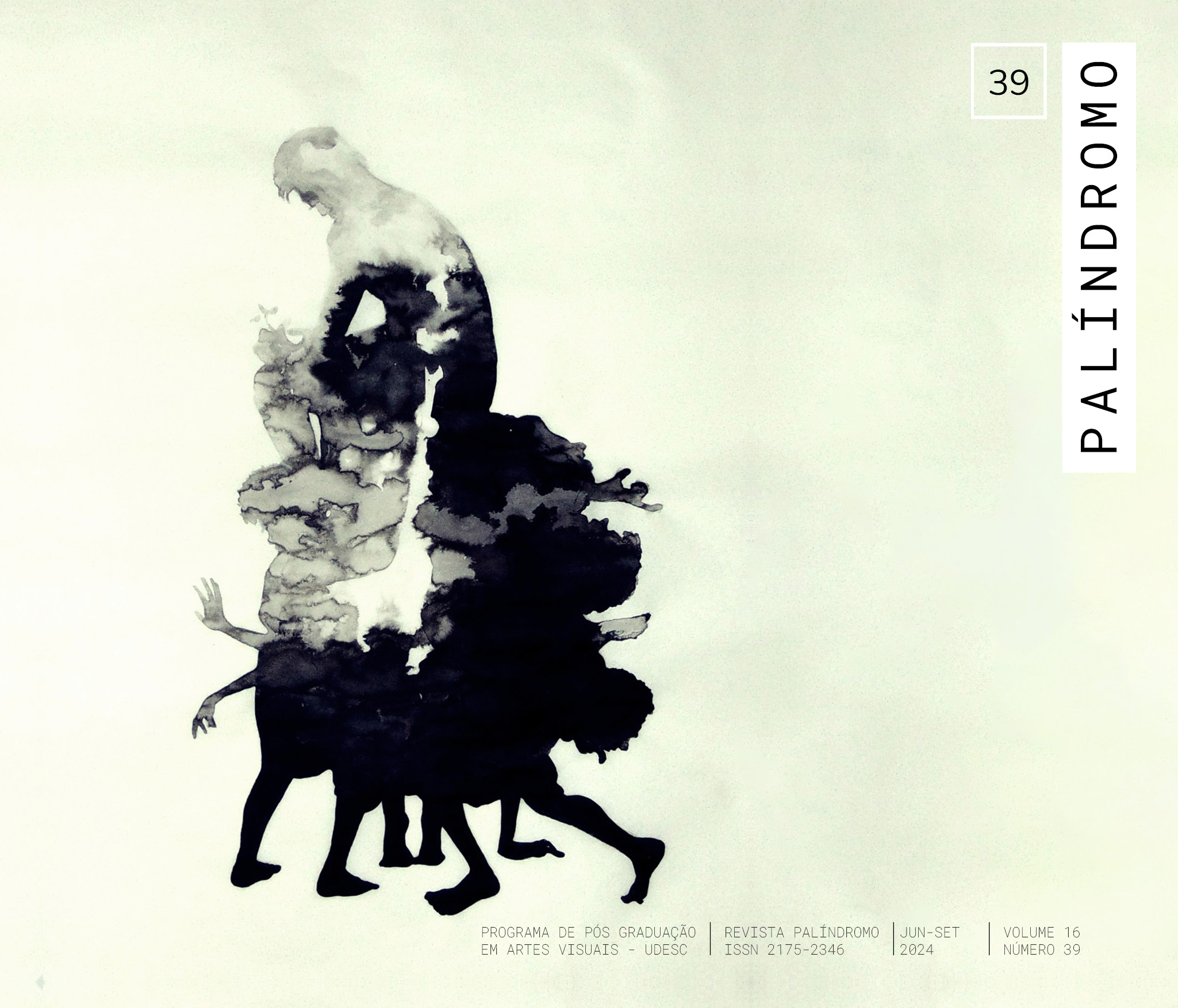Triste tormenta: o trágico em uma paisagem de Albert Bierstadt
DOI:
https://doi.org/10.5965/2175234616392024e0006Parole chiave:
Albert Bierstadt, Ontologia naturalista, Pintura de paisagemAbstract
O objetivo do texto é apresentar uma possibilidade de análise da pintura de paisagem da Hudson River School e, em particular, de Albert Bierstadt, por meio de um exame de fatores ontológicos e sócio-históricos. Busca-se, com isso, desenvolver dois pontos. Primeiro, mostrar como a ontologia naturalista organiza o modo hegemônico de classificar essas pinturas; segundo, restituir os modos verossímeis de representação vigentes no período de confecção dos quadros para além dos critérios naturalistas hoje dominantes. Conclui-se, com o auxílio de instrumentos de análise da história ambiental da arte, que a busca pelos “estilos de atenção” praticados nas obras consistia na tentativa de pintores como Bierstadt de fixar um mundo natural em vias de destruição.
Downloads
Riferimenti bibliografici
BAXANDALL, Michael. O olhar renascente: pintura e experiência social na Itália da Renascença. Trad. Maria Cecília Almeida. São Paulo: Edusp, 1991.
BOURDIEU, Pierre; DELSAULT, Yvette. Pour une sociologie de la perception. In: Actes de la recherche en sciences sociales. Vol. 40, novembre 1981.
DESCOLA, Philippe. Les formes du visible : une anthropologie de la figuration. Paris: Seuil, 2021.
DESCOLA, Philippe. Para além de natureza e cultura. Trad. Andrea Daher & Luiz César de Sá. Rio de Janeiro: Eduff, 2023.
GELL, Alfred. Arte e Agência. Trad. Jamille Pinheiro Dias. São Paulo: Ubu, 2020 [1998].
HASSRICK, Peter. Art, agency, and conservation: a fresh look at Albert Bierstadt’s vision of the West. Montana The Magazine of Western History, Spring 2018, Vol. 68, No. 1 (Spring 2018)
LATOUR, Bruno. Jamais fomos modernos: ensaio de antropologia simétrica. Trad. Carlos Irineu da Costa. São Paulo: Editora 34, 2013 [1991].
MEAD, Ryan. Surveys, Illustrations and Paintings: Framing Manifest Destiny in the Early American Republic. Review (Fernand Braudel Center), 2012, Vol. 35, No. 1.
MENGUAL, Estelle Zhong. Apprendre à voir: le point de vue du vivant. Paris: Actes Sud, 2021.
MILLER, Angela. Albert Bierstadt, Landscape Aesthetics, and the Meanings of the West in the Civil War Era. Art Institute of Chicago Museum Studies, 2001, Vol. 27, No. 1, Terrain of Freedom: American Art and the Civil War.
MURARI, Luciana. Natureza e cultura no Brasil (1870-1922). São Paulo: Alameda, 2009.
NOUVEL, Odile. Symbols of Power: Napoleon and the art of the empire style (1800-1815). New York: Harry Abrams, 2007.
VAN ECK, Caroline. Works of art that refuse to behave: agency, excess, and material presence in Canova and Manet. New Literary History, Vol. 26, Nº 3, Summer 2015.
Downloads
Pubblicato
Come citare
Fascicolo
Sezione
Licenza
Copyright (c) 2024 Luiz César De Sá

TQuesto lavoro è fornito con la licenza Creative Commons Attribuzione 4.0 Internazionale.
DECLARAÇÃO DE DIREITOS AUTORAIS
a. Os artigos publicados pela revista são de uso gratuito, destinados a aplicações acadêmicas e não comerciais. Todos os direitos autorais são atribuídos à revista. Os artigos cujos autores são identificados representam a expressão do ponto de vista de seus autores e não a posição oficial da Revista Palíndromo. O (s) autor (es) compromete-se sempre que publicar material referente ao artigo publicado no Palíndromo mencionar esta publicação da seguinte forma:
Este artigo foi publicado originalmente pela revista Palíndromo em seu volume (coloque o volume), número (coloque o número) no ano de (coloque o ano) e pode ser acessado em: http://www.revistas.udesc.br/index.php/palindromo
b. Plágio, em todas as suas formas, constitui um comportamento antiético de publicação e é inaceitável. A revista Palíndromo utiliza o software iThenticate de controle de similaridade


